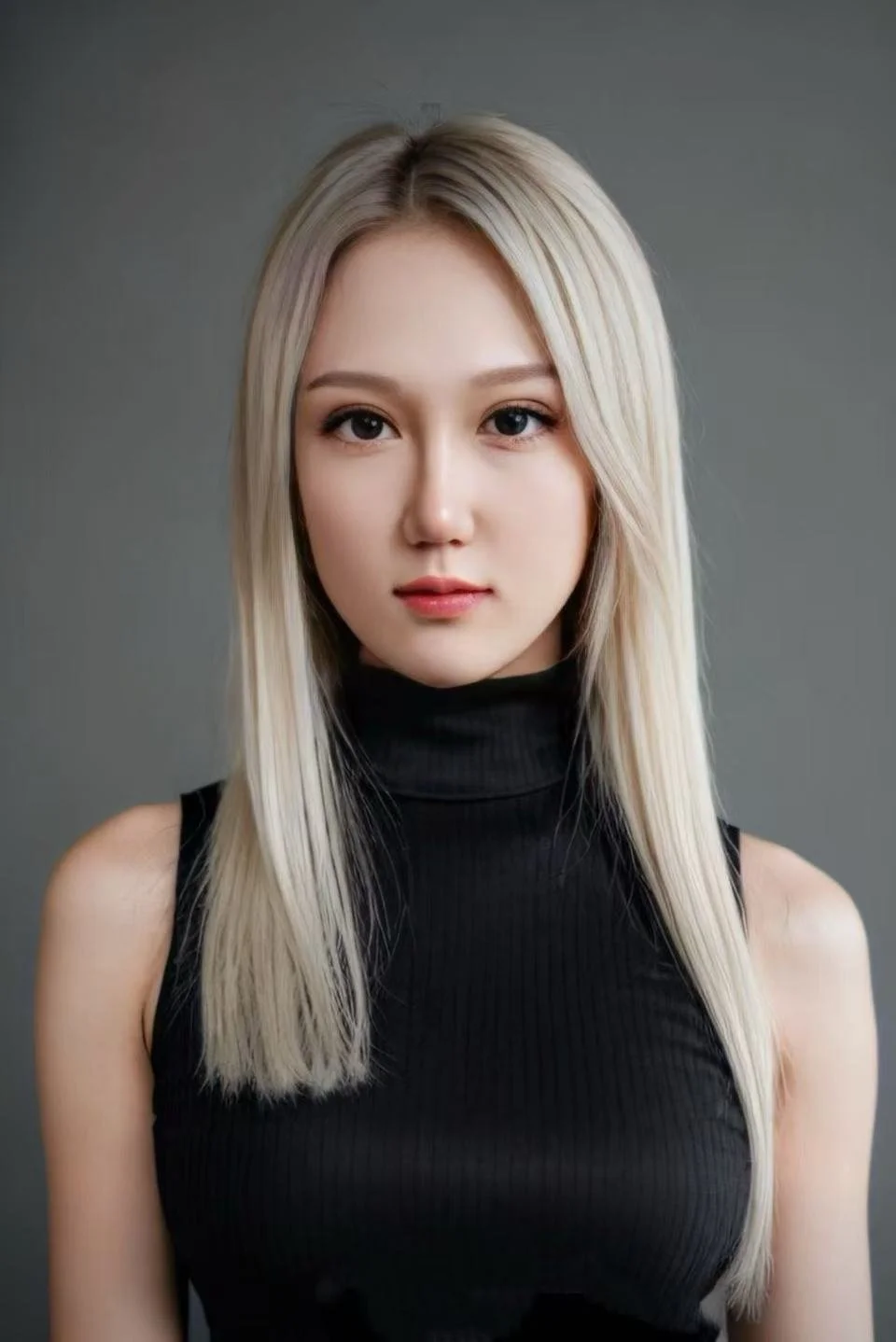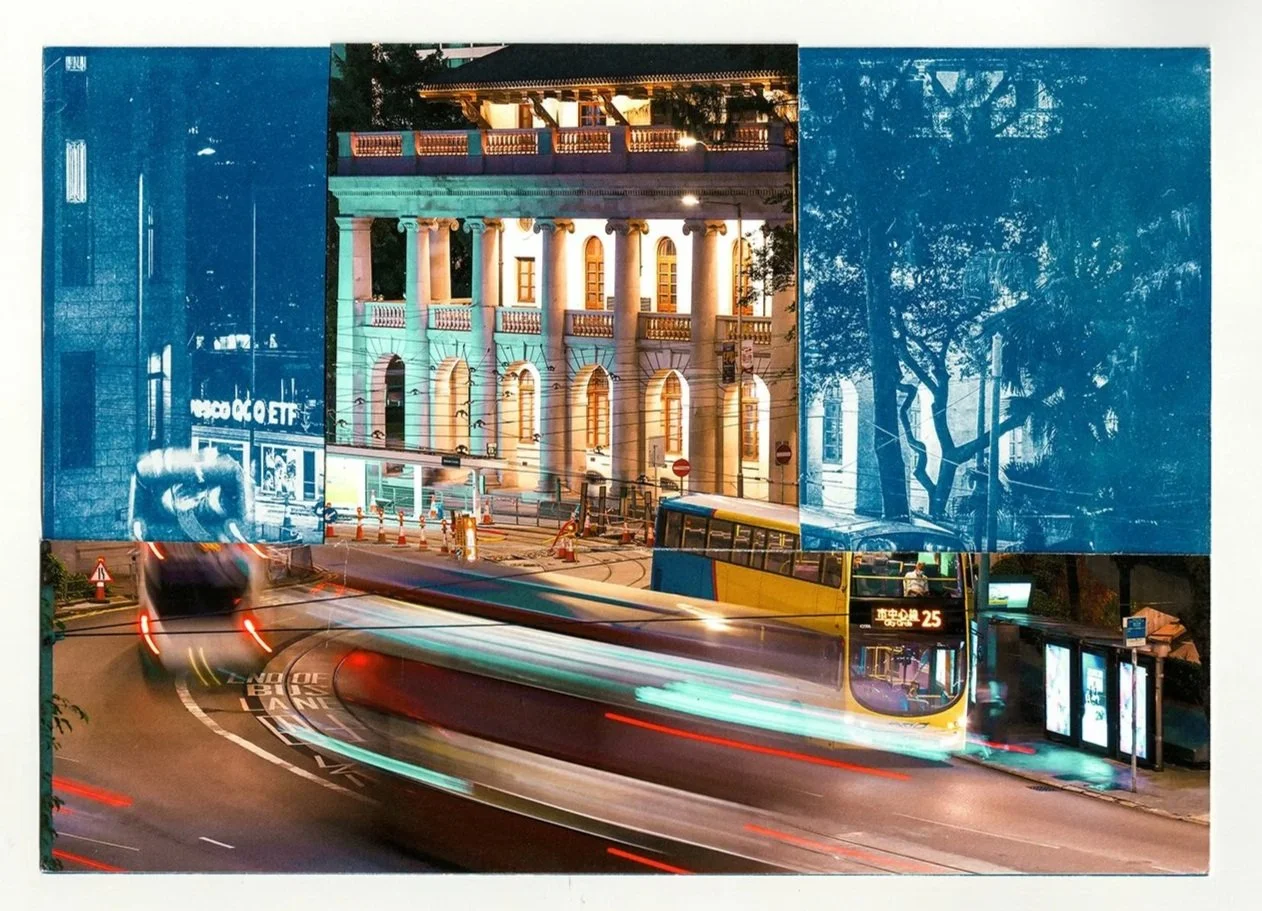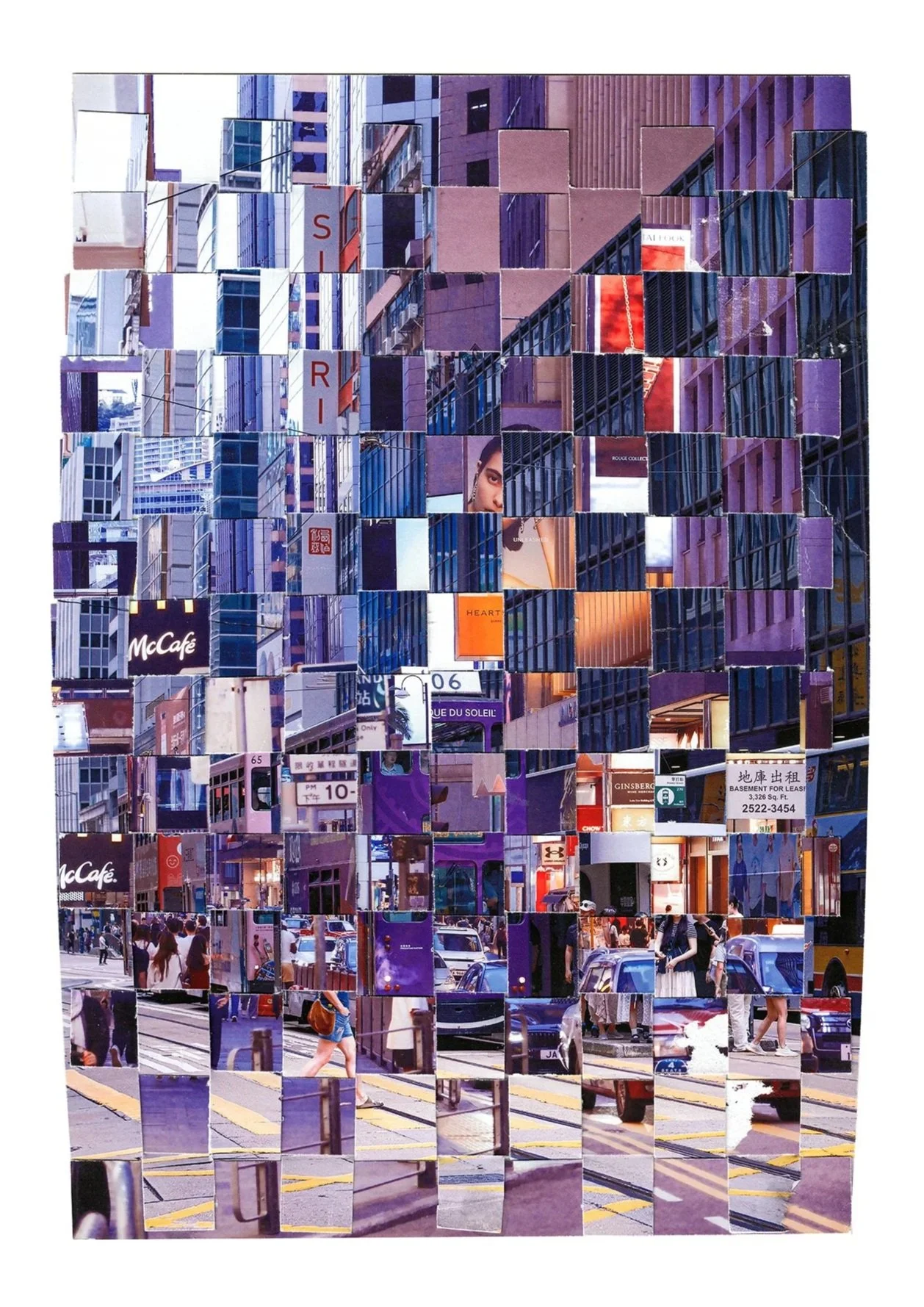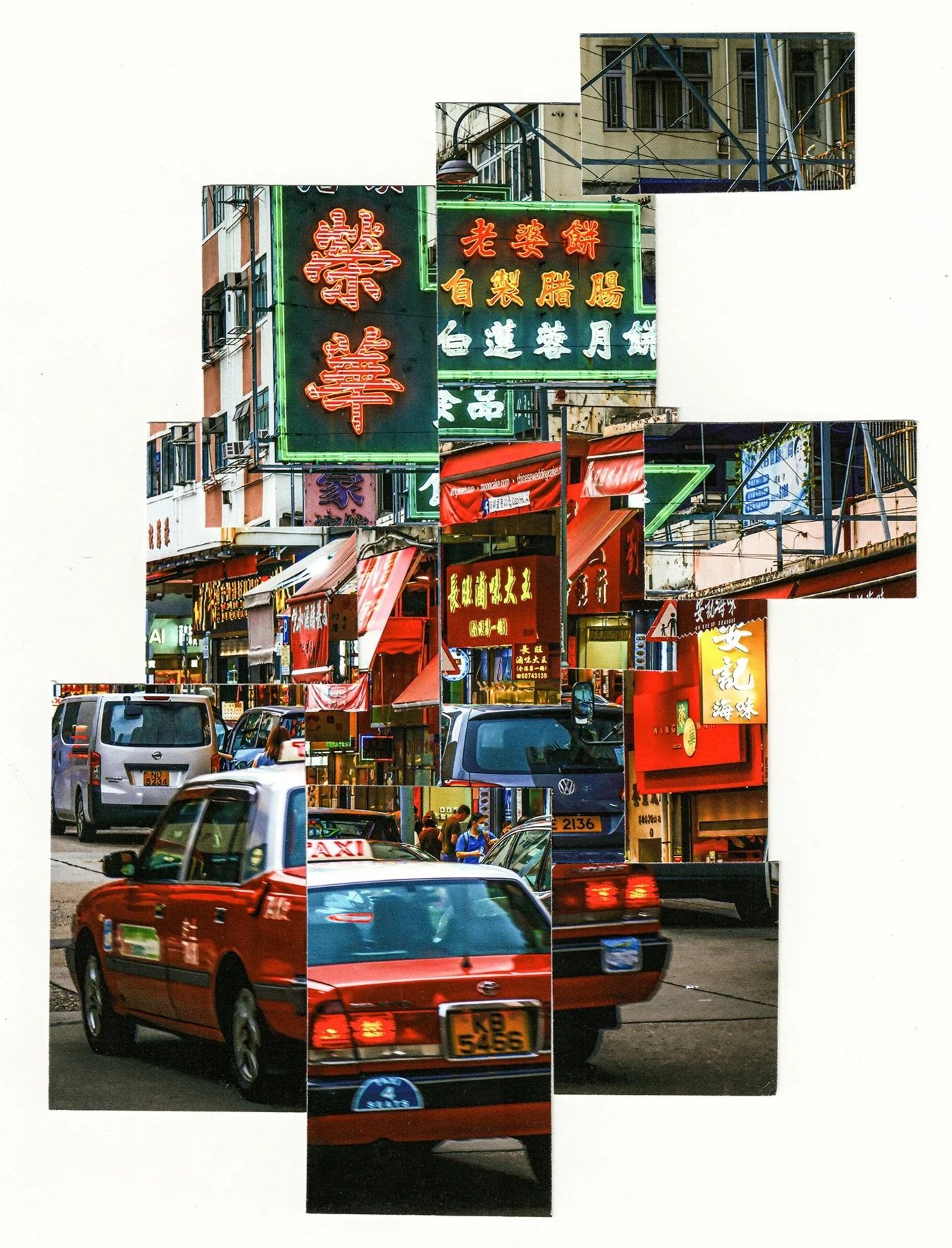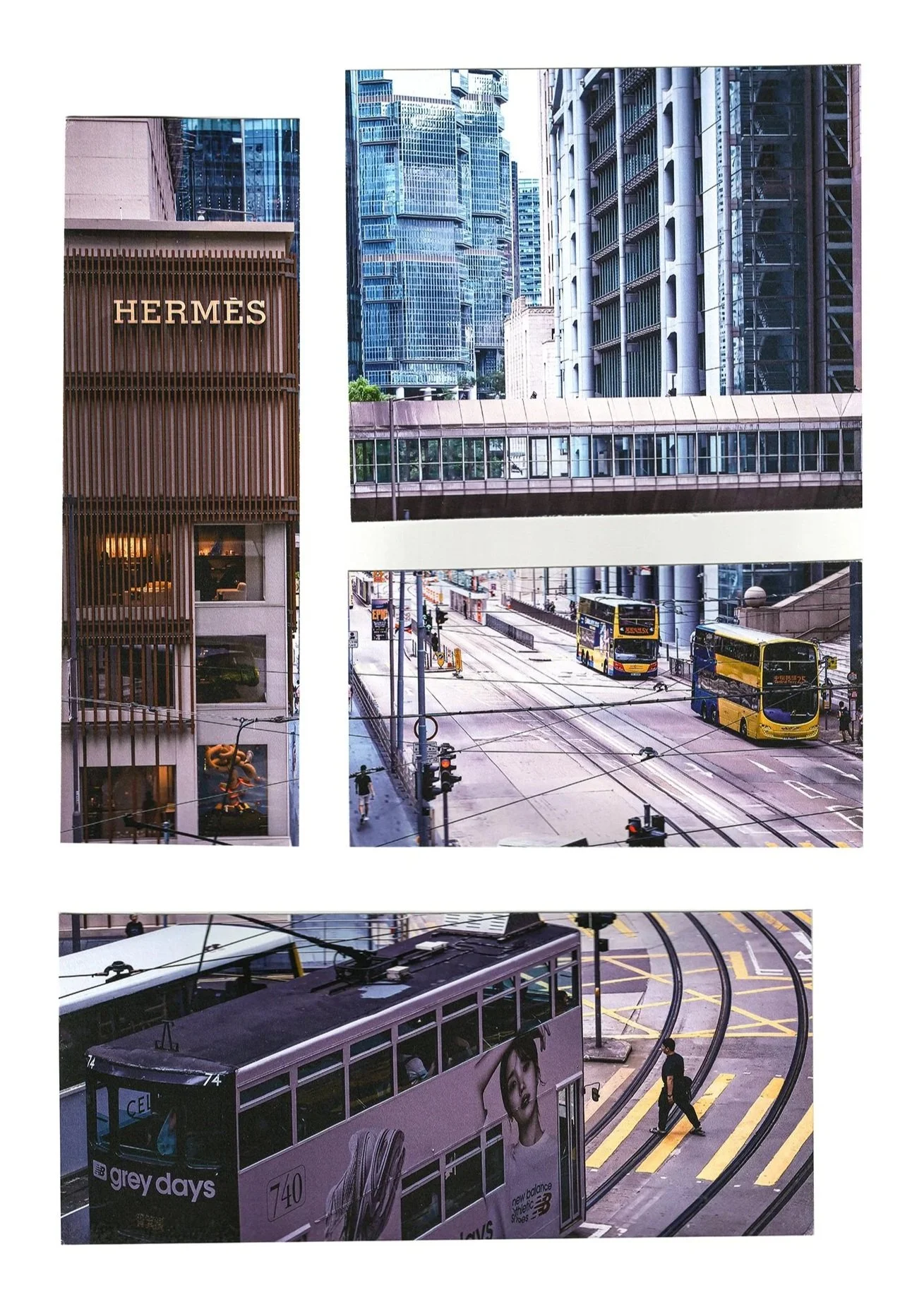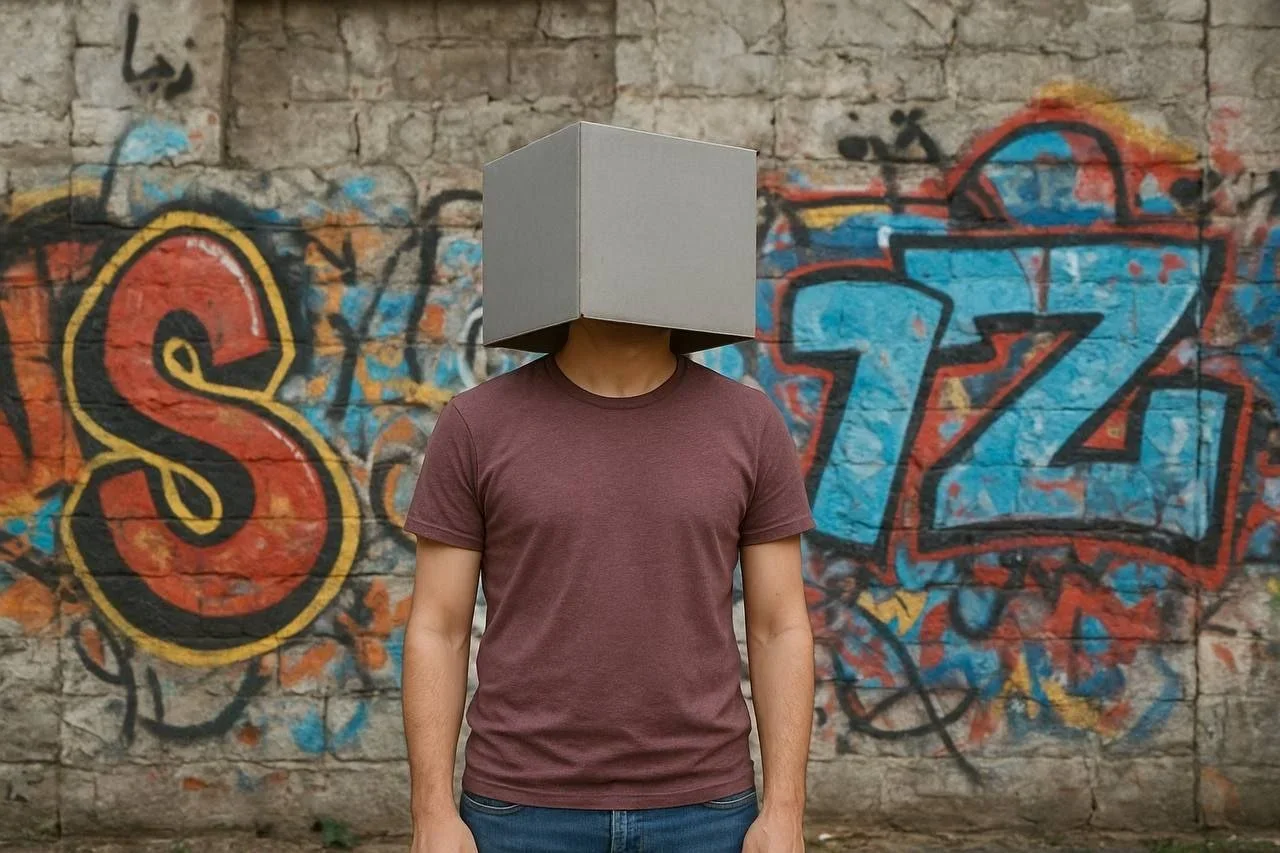10 Questions with Jiaxin Chen
Jiaxin Chen is a visual artist whose practice explores the relationship between photography, materiality, and urban memory. Originally trained in visual communication, she gradually shifted her focus toward experimental photography as a means of expressing the layered textures of contemporary city life. Her recent work combines cyanotype printing with traditional Yongchun paper weaving, drawing connections between digital imagery and handcrafted forms. Influenced by the visual language of Hong Kong’s streets, signage, and transit systems, Chen creates tactile, collage-based compositions that reflect themes of fragmentation, rhythm, and transformation. Her work challenges the boundary between image and surface, often blurring photography with sculpture and textile. Jiaxin has exhibited in both solo and group exhibitions across the UK and Asia, and her work has been featured in international art publications. Through a hybrid of old and new methods, she continues to investigate how cities breathe, shift, and imprint themselves on the human experience.
Jiaxin Chen - Portrait
City Frequencies: Cyan Echoes and Street Collages | Project Description
City Frequencies: Cyan Echoes and Street Collages interlaces photographic prints through a hybrid process of cyanotype and traditional Yongchun paper weaving, blending digital pixels with textile grids. This poetic method reflects the city’s contrasting qualities of order and chaos, memory and immediacy, expressed through light, texture, and form. Jiaxin Chen’s practice challenges the conventional view of photography as a tool for representation. Instead, she transforms the photographic surface into a tactile, living form. By using distortion and repetition, she evokes a sense of fragility, displacement, and transformation. Her work explores the fluid boundary between image and material, control and unpredictability, constructing layered visual narratives that reimagine the urban environment as both intimate and unstable.
City Frequencies: Cyan Echoes and Street Collages (Colonial Echo), Cyanotype and photographic collage on paper, 29.7 × 42 cm, 2025 © Jiaxin Chen
INTERVIEW
Your academic background lies in visual communication. How did this training influence or shape your current practice?
My training in optoelectronics, applied optics, Spectroscopy, and photometry provided a foundation in the structure and balance of image making. It taught me how meaning is constructed, not just through content but through form, rhythm, and space. That early training still underpins my work today.
Over time, I began to move away from the idea of the image as something meant to “communicate efficiently.” Instead, I started exploring how images could resist clarity, how they could embody confusion, slowness, or multiplicity. My scientific background in optoelectronics also led me to view the image as a system of light and material, rather than just a representation. This tension between communication and opacity, between structure and collapse, continues to define my practice. I became more interested in the moment when an image begins to dissolve, when legibility gives way to texture, and communication becomes something felt rather than read. I think of each work as a visual conversation between order and entropy, where meaning doesn’t resolve, but oscillates.
City Frequencies: Cyan Echoes and Street Collages (Checkered Crossing), Cyanotype and photographic collage on paper, 29.7 × 42 cm, 2025 © Jiaxin Chen
You later shifted toward experimental photography. What prompted this change, and why did you choose photography as your main medium?
The shift toward experimental photography came almost instinctively, as a way of reconciling two different modes of thinking, the analytical and the intuitive. My background in science trained me to see light as data, a measurable phenomenon, yet in art, I began to feel light as emotion, as pulse. Photography became the perfect medium to bridge these worlds because it sits at the boundary between precision and accident, between technology and poetry.
I was drawn to the paradox that photography is both mechanical and deeply human. A camera captures what’s visible, but the photograph always holds something unseen, a trace of time, a residue of perception, a fragment of what escapes language. Experimental photography allowed me to engage with that invisible dimension. I began treating light, sensitive materials as living surfaces, exposing, staining, scratching, and folding. Through these processes, I realised photography could be less about capturing the world and more about revealing the conditions under which we see. It became a philosophy of perception, a way of asking: what happens when light doesn’t describe but transforms?
You’ve developed a fascinating hybrid technique combining cyanotype with Yongchun paper weaving. Could you share how this method emerged and what it represents conceptually for you?
The method grew from a desire to merge two forms of knowledge: scientific and cultural, mechanical and handmade. Cyanotype carries a scientific genealogy. However, Yongchun paper weaving is a craft rooted in patience and repetition, a tradition passed through generations. By interlacing the two, I wanted to weave together two epistemologies: the rational and the embodied, the technological and the ancestral. Conceptually, the act of weaving becomes a metaphor for assembling fragmented time. Each woven cyanotype embodies dualities: the trace of light and the touch of the hand, the permanence of the image and the impermanence of the paper.
You describe your practice as challenging photography’s representational role. What does photography become in your work, an image, an object, or something in between?
Photography, in my work, is a membrane that vibrates between image and object, illusion and matter. I am not interested in the photograph as a transparent window onto reality; rather, I treat it as a tactile field where perception and process collide. Every chemical trace, every irregularity, every fold or abrasion becomes part of the image’s language. Sometimes, I think of the photographic print as a body: it has a skin that absorbs and scars, a memory that records trauma and light. Every image is mediated, that seeing is not neutral. It is always shaped by tools, by touch, by history. In my work, photography exists at that unstable threshold, a site of friction where visibility is constantly negotiated.
City Frequencies: Cyan Echoes and Street Collages (Market Memory), Cyanotype and photographic collage on paper, 29.7 × 42 cm, 2025 © Jiaxin Chen
City Frequencies: Cyan Echoes and Street Collages (Neon Descent), Cyanotype and photographic collage on paper, 29.7 × 42 cm, 2025 © Jiaxin Chen
City Frequencies: Cyan Echoes and Street Collages (Intersected Lives), Cyanotype and photographic collage on paper, 29.7 × 42 cm, 2025 © Jiaxin Chen
City Frequencies: Cyan Echoes and Street Collages (Street Syncopation), Cyanotype and photographic collage on paper, 29.7 × 42 cm, 2025 © Jiaxin Chen
Your process merges digital imagery with handcrafted forms. How do you navigate the dialogue between such different approaches?
For me, digital and manual processes are not opposites but different temporalities of making. The digital realm offers precision, repeatability, and control, qualities that echo the speed and rationality of modern life. Handcraft, on the other hand, carries slowness, deviation, and imperfection, it reintroduces the human pulse that technology often conceals.
When I merge the two, I’m staging a dialogue between these modes of existence. I might begin with a digitally composed photograph, then print it onto handmade paper or weave it into strips, allowing my hands to disrupt the calculated grid. The digital gives form, the hand gives vulnerability. The point of intersection, where a pixel meets a fibre, becomes the heart of the work.
This negotiation mirrors the world we live in: cities that are both algorithmic and handmade, filled with contradictions. By uniting these methods, I’m not seeking harmony but resonance, a state where technology and craft speak to each other, acknowledging both control and surrender.
Fragmentation, rhythm, and transformation recur in your works. What draws you to these ideas, and how do they connect to your personal experiences of urban life?
I think fragmentation is inherent to contemporary life. The city is built on interruption: overlapping voices, reflections, screens, and surfaces. It’s never whole, it’s always shifting. Living between different cultures and geographies, I often experience time and memory in fragments too. There is always a sense of translation, between languages, between emotional registers, between places that never fully align.
In my work, fragmentation becomes a method of reflection. I cut, fold, layer, and repeat images as a way of materialising the sense that life, like the city, is a collage constantly being rewritten. Rhythm enters as a counterpoint to fragmentation. It offers structure, continuity, and breadth.
The visual culture of Hong Kong, its signage, density, and layered textures, seems central to your aesthetic. In what ways does the city’s visual identity inform your compositions?
Hong Kong is a city that breathes in contradictions. It is luminous yet shadowed, hyper-modern yet haunted by memory. When I walk through the city, I see it as a living palimpsest, a surface constantly being rewritten. Neon lights bleed into rain, mirrored façades absorb human gestures, and signage overlaps like visual noise. These textures find their way into my compositions: through layering, double exposure, and weaving. I don’t aim to depict Hong Kong literally, but to convey its atmosphere, its pulse, its melancholy, and its simultaneity.
In my series City in Dual Exposure, I wanted to capture this feeling of suspended temporality, the sense that the city is both future-oriented and perpetually looking back. It becomes a metaphor for identity itself: fragmented, luminous, and constantly folding in on itself.
City Frequencies: Cyan Echoes and Street Collages (Compressed Density), Cyanotype and photographic collage on paper, 29.7 × 42 cm, 2025 © Jiaxin Chen
Could you walk us through your creative process, from concept to finished piece? How do chance, repetition, or error contribute to the final outcome?
My process always begins with observation, not of scenes but of rhythms. I spend a lot of time walking, collecting fragments of light, textures, and reflections. I take photographs, but also notes, sometimes words, sometimes temperature, sound, or smell. These impressions accumulate like data but also like emotion.
From there, I begin translating these impressions into material experiments. I print on handmade paper, stain with chemicals, weave fragments together, and often repeat a single gesture dozens of times. Repetition allows me to enter a meditative state, it mirrors the city’s pulse, its cycles of construction and erasure.
Cyanotype is unpredictable; exposure time, humidity, and material thickness all affect the final tone. I welcome these variations; they are the medium’s way of speaking back. Error, too, becomes a collaborator. A misalignment or chemical burn might open new visual possibilities. For me, every accident carries knowledge. The finished piece is rarely planned, it’s discovered gradually, through dialogue with the material.
What kind of emotional or intellectual response do you hope viewers experience when encountering your woven cyanotypes and collages?
I hope my work invites a kind of slowness. In a world saturated with instant images, I want to create a space where seeing takes time, where the eye must linger, adjust, and return. The woven structures require close attention, they conceal and reveal simultaneously. Emotionally, I want viewers to sense a quiet melancholy, like memory resurfacing in fragments, what lies beneath its surface, how history and technology shape our ways of seeing. Ultimately, I want to open a sensory field, where touch, light, and time intertwine. When viewers stand before the work, I hope they feel both connected and slightly disoriented, as if they were remembering something they never experienced but somehow still know.
City Frequencies: Cyan Echoes and Street Collages (Red Minibus Rhythms), Cyanotype and photographic collage on paper, 29.7 × 42 cm, 2025 © Jiaxin Chen
Lastly, looking ahead, how do you see your practice evolving? Are there new materials, technologies, or urban narratives you’re interested in exploring?
Looking ahead, I see my practice expanding into more spatial and immersive forms. I’ve been increasingly drawn to installation, to transforming photographic surfaces into environments where light, sound, and texture create a continuous experience. I’m researching how data visualisation and AI-generated imagery might interact with traditional materials like paper and textile, not to celebrate technology, but to question its limits and emotional resonance.
I’m also interested in collaborating with sound and performance artists to explore the sensory dimension of memory, howthe rhythm of a city can be translated into sonic or kinetic language. In a broader sense, I want to continue tracing how cities “remember”, how urban spaces carry collective emotion within their material structures.
Ultimately, my goal is not to document the visible world but to create spaces where visibility itself becomes uncertain, where light, material, and memory converge to reveal the fragile architectures of perception.
Artist’s Talk
Al-Tiba9 Interviews is a curated promotional platform that offers artists the opportunity to articulate their vision and engage with our diverse international readership through insightful, published dialogues. Conducted by Mohamed Benhadj, founder and curator of Al-Tiba9, these interviews spotlight the artists’ creative journeys and introduce their work to the global contemporary art scene.
Through our extensive network of museums, galleries, art professionals, collectors, and art enthusiasts worldwide, Al-Tiba9 Interviews provides a meaningful stage for artists to expand their reach and strengthen their presence in the international art discourse.


